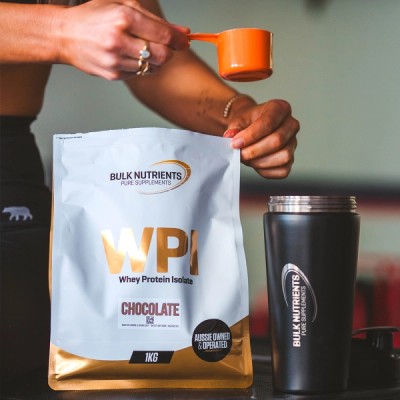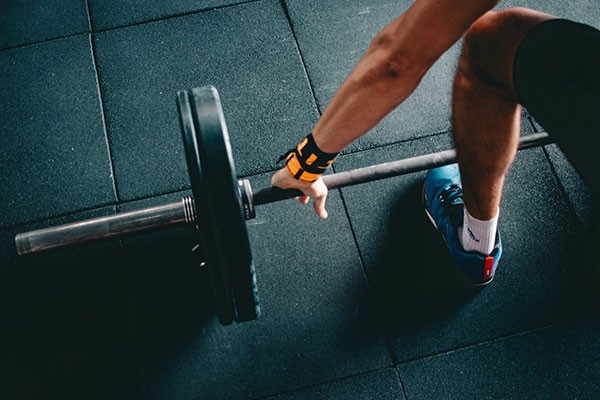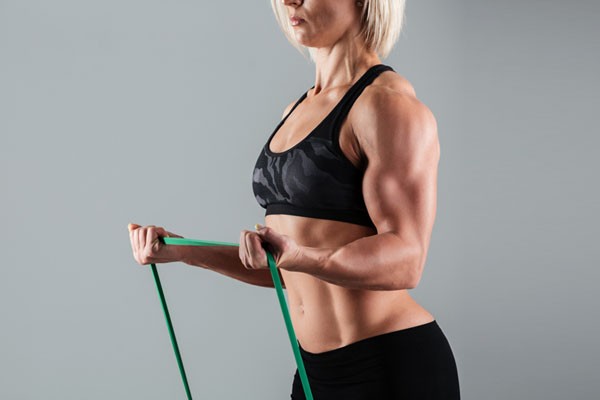
Supplement Powder Densities
Posted by Nick Telesca
Estimated reading time: 7 minutes

This research reviewed a whole group of science papers that examined the relationship between resistance training and all-cause, cardiovascular disease, and cancer mortality. Only studies conducted among non-clinical adult populations who were over 18 years were included.
Ten studies were ultimately selected. So, what did they find?
And before you grab your gym bag and head out – the researchers also found that a maximum risk reduction of 27% was observed at around 60 minutes per week of resistance training.
That’s an incredible statistic! It ought to be plastered on the wall of every gym.
I’ll also mention out of the ten studies, only four found that MORE resistance training wasn’t better. For example, doing 2 hours instead of one isn’t superior.
The researchers said this is the strongest evidence to date that resistance training is:
“...associated with reduced risk of all-cause, cardiovascular disease, and cancer-specific mortality. More research is needed to determine whether any potential mortality benefits gained from resistance training diminish at higher volumes.”
So, add potentially a longer life to your list of resistance training benefits!
We await more research to discover the threshold for resistance training and longer life. It might be that after 90 minutes we reach a point of diminishing returns, like what researchers have found with running.
This observational study tracked over 52,000 people for 30 years and found the positive effects of running diminished among people who did more than 32 kilometres per week, more than six days a week, or faster than 12.9 kilometres per hour.
The ideal amount was found to be 8 kilometres to 30 kilometres per week, at 9-11 kilometres per hour, spread throughout three to four sessions per week.
The runners who stuck to these guidelines saw the greatest health benefits: their risk of death dropped by 25 per cent.
Another observational study found weekly running for less than 51 minutes and less than 9.6 kilometres, 1-2 times at less than 9.66 km/h, was sufficient to reduce the risk of mortality, compared with not running.
And compared with non-runners, runners had 30% and 45% lower adjusted risks of all-cause and cardiovascular mortality, respectively, with a 3-year life expectancy benefit.
Amazingly, even 5-10 minutes of running per day at less than 9.6 kilometres was linked to reduced risks of death from all causes and cardiovascular disease.
So, if we’re not overdoing it, we’re actually extending our life span by running, too. Any more than this is actually detrimental to the male aorta; aging it by up to ten years. However, the same isn’t seen in women.
But back to resistance training, and it might not just help extend our life span but improve the quality of our later years, too.

Starting as early as our 40s, we're at risk of developing sarcopenia; loss of muscle tissue and function. This makes things as simple as walking difficult.
But we can combat muscle wastage with resistance training.
And for the elderly, the best way to bolster muscle tissue and strength in the elderly is with progressive resistance training.
Although, cycling and even dancing can help, too!
And aerobic training (running) is only a minor solution to sarcopenia long-term, so it's recommended we include resistance training weekly!
No matter how old you are, it's best to get into the habit of resistance training as early as you can; fighting sarcopenia when it has already settled in is a lot harder.
Another benefit is resistance training's effect on bone density. Stronger bones will assist in a better quality of life!

FACT: Exercise helps us deal with stress better.
In the modern digital era, some of us have seen our working hours increase which can exacerbate stress.
And research has found exercise to create less stress in many populations; as extreme as veterans suffering from PTSD, athletes, and the aforementioned everyday person.
Scientists also report that those who exercise regularly experience fewer daily hassles.

Finds a positive correlation. Compared with undertaking no resistance training, pumping iron reduces the risk of all-cause mortality by 15%, cardiovascular disease mortality by 19%, and cancer mortality by 14%.
A maximum risk reduction was observed at around 60 minutes per week of resistance training. More research is needed to determine whether any potential mortality benefits gained from resistance training diminish at higher volumes.

Like many, Dayne was once desperate to lose weight and get into shape. But everyone he asked, everything he read, lead to the same place... nowhere.
His journey started there - researching science journals and completing a Sports Nutrition Specialist qualification so he could make weight loss easier.
With over 700 recipes and articles, the Bulk Nutrients Blog has something for everyone! Find a new workout, meet our ambassadors or take a deep dive into our products today.
We're an Australian manufacturer and supplier of high quality sports supplements.
Operating since 2008, Bulk Nutrients has become one of the premier Australian brands to supply nutritional products to top level athletes, competitors and those on a journey to a healthier lifestyle.
One thing that sets Bulk Nutrients apart is that we love to talk to our customers!
Whether you need product advice, help with the website or need a change made to your order... call us on +61 3 6266 4725.
If you prefer email you can email us day or night at info@bulknutrients.com.au
For online chat, hit the 'Chat' button in the bottom right hand corner of your screen and you'll be connected to one of our lovely customer service team.
Or if you'd like to get in touch through our online contact form, that's cool too!
Terms & ConditionsSustainability StrategyPrivacy PolicyPayment InformationSitemap
All prices are in Australian dollars (AUD) and include GST unless otherwise stated.
All content copyright © Bulk Nutrients 2008 - 2024